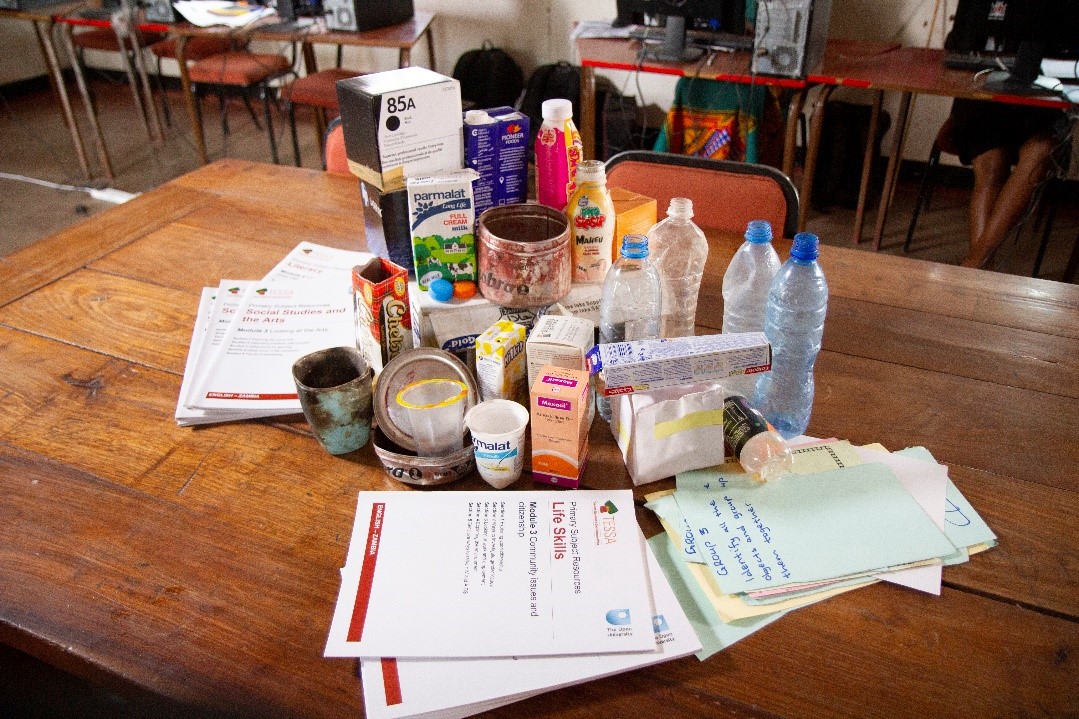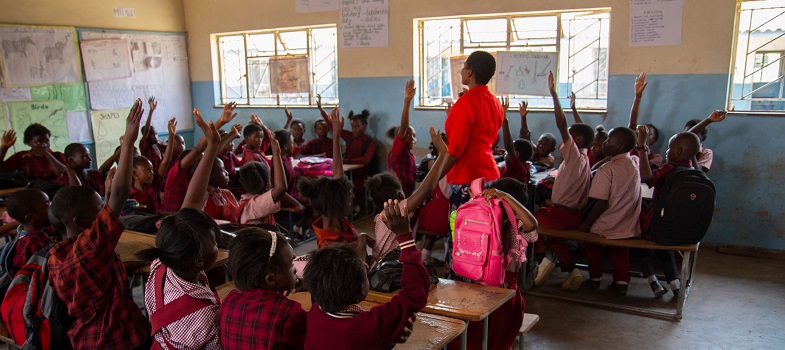Training guide
4. Using local resources
One of the misconceptions around LCE is that it is only possible if you have access to plenty of resources. There is no doubt that it is easier with resources, but it is perfectly possible to draw on things that are locally available to help you, especially if you work with your colleagues to develop and share resources. One issue is how to store the things you make and develop, so think about this at an early stage. Some schools develop a ‘resources room’. Teachers can borrow resources as they need them. Alternatively, you could keep a set of boxes in the staff room.
Listen to the audio or read the text below which introduces you to the idea of local resources.
|
Audio transcript The outside environment can be seen as a place to collect resources; but it can also be an extension of your inside classroom. Here are some ideas about how to use the local environment to support, resource and extend your classroom teaching. Wherever your school is, there will be many living things that you can collect and bring into the classroom for short periods for your learners to investigate and observe. Either you could do the collecting, or you could take your class out to help you. Bringing in leaves, for example, will enable learners to study these more closely. Some insects can be kept in suitable containers or conditions for a short period of time. But do ensure that learners stay away from dangerous insects or animals such as snakes or wasps. Be clear what your learners are going to learn and give them time to observe the creatures safely, so the students are not frightened, and also that they do not frighten the animals. Make sure that they respect the animals and plants; and understand how important these are to the community. Remember, they can also use their own bodies to do things like investigating the effect of exercise on heart rate; or understanding how muscles work together. There are many things that you might be able to collect from the local environment – whether you are in a rural or urban setting. These can help you in the classroom. These include:
All of these and many other materials can be gathered over time, so that when you want to do modelling with your class you have a stock of resources. Or when you want to do posters you have some card for each group to write on. Always ask if you can have the materials you see. And get your students to help you gather the materials in advance of your lessons. For example, on one of the TESSA activities, children make models of animals out of ‘rubbish’. This can help younger children learn the words for different parts of an animal, or for older children to learn about specific adaptations. |

Collection of local resources
Activity 1.12: Ideas for using local resourcesWatch the video about how the teacher is using local resources in their lesson. In your Teacher Notebook make notes about what resources the teacher used.
Share your notes with a colleague. Did you notice the same things? Did you notice something your colleague did not? |
